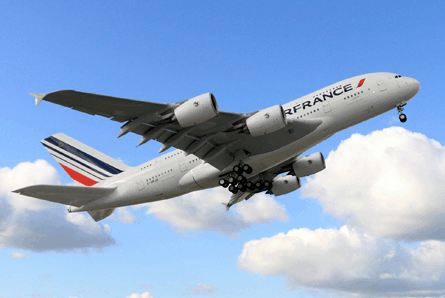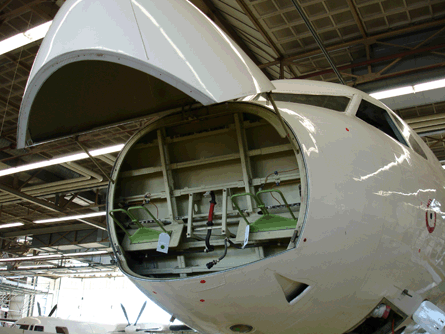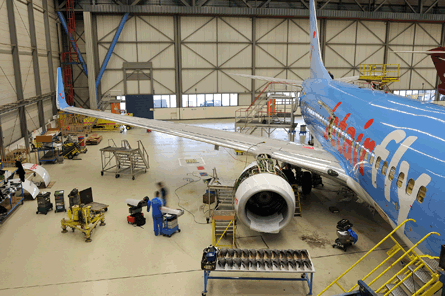Fourteen years after being plucked from bankruptcy by Dutch conglomerate Stork, one of the most famous names in European aircraft manufacturing has its old brand back. The change at the end of 2009 from Stork Aerospace to Fokker Aerospace Group recognises that the almost €600 million ($810 million)-turnover business has undergone a phenomenal transformation over the past decade - restructuring as a major third-party force in aerostructures, electrical systems and maintenance and overhaul - and is being groomed for eventual divestment.
Stork itself is owned by UK private equity company Candover and the industrial group's chief executive Sjoerd Vollebregt says: "We are working with Candover on the next steps for Fokker." The aerospace division represents about 40% of Stork and one option is a spin-off on the Amsterdam stock market, separately from the rest of the business. However, any move is unlikely to be imminent. "We still have to finalise our strategy," he says. "I do not expect major change this year."
 |
|---|
© Air FranceFokker is a key supplier on the A380, fabricating the Glare panels that make up part of the superjumbo's fuselage |
One thing Fokker will not become again, however, is an aircraft manufacturer. Although Fokker was a "phenomenal" airframer with a legacy that has helped it prosper as a third-party supplier, the company will not be getting involved directly with privately funded efforts (now backed by the Dutch government) to resurrect the Fokker 100 regional jet. Big ambitions, with "less attention paid to how they were going to be paid for", were behind Fokker's 1990s downfall, says Vollebregt.
"We will not be back in aircraft manufacturing. We will support any new aircraft but we will not be the prime," he says. "We have a wide customer base including Bombardier, Lockheed Martin, Northrop Grumman, Boeing, Gulfstream and Airbus, and this gives us stability. We have the advantage of being broader. We are very comfortable knowing that people still recognise the legacy we have in knowing how an aircraft is assembled."
Fokker Aerospace - founded in 1919 with origins going back to founder Anthony Fokker's first flight in his Spider in 1911 - was until 1996 a highly vertically integrated concern focused on developing a family of regional aircraft. The company today operates in three main markets: structures and landing gears, electrical systems and aftermarket services, all of which formerly supplied and supported its aircraft activities.
"Two years ago, only 20% of our service business was third party. Now it's 50%"Steve HandsFokker Aircraft Services |
Within that, there are five businesses. The biggest, Fokker Aerostructures, based in Papendrecht in the south of the country and with 1,500 employees, builds a range of sections for military, commercial and business aircraft using a variety of materials. It is perhaps best known for Glare, its patented and award-winning glass-reinforced aluminium sandwich that makes up part of the Airbus A380's fuselage as well as the leading edges on its horizontal and vertical tailplane.
As well as a small landing gears division, the other manufacturing business is Fokker Elmo. Employing 1,200 and situated near the Belgian border in Hoogerheide, Elmo has won deals to design and build wiring systems for the A400M, the Bombardier CSeries and the Lockheed Martin F-35 Joint Strike Fighter (in which the Dutch government is a partner). It has manufacturing operations in Turkey and China and is establishing further overseas offshoots in Montreal, Seattle and Fort Worth to support the CSeries, Boeing and JSF programmes.
 |
|---|
© Fokker Aircraft ServicesMaintenance, repair and overhaul and electrical wiring systems are two key sectors for Fokker |
The final two businesses are in the aftermarket. Fokker Services is the type certificate holder for and supports the worldwide fleet of 700 Fokker aircraft with centres in the Netherlands, the USA and Singapore. Fokker Aircraft Services - recently set up as a separate division to reflect the business's growing activities outside the shrinking Fokker fleet and also in Hoogerheide - is being positioned as a niche MRO, specialising in airframe maintenance and cabin modifications.
Fokker Aerostructures had a head start in the third party arena thanks to Fokker's original risk-sharing involvement in the Airbus A300 programme as well as the NH90 European medium helicopter. However, Fokker itself backed away from moves towards integrating Airbus in the 1980s and 1990s and the company's significant share of the A380 structure - particularly the 27 panels of Glare it supplies (including a single 12 x 3m/39.3 x 10ft piece of fuselage) - was won purely as a result of its technological merits in the marketplace, says chief technology officer Jan de Jong. It has also muscled its way into the Boeing supply chain, although on the 747-8 rather than the 787. But it has not succeeded in finding an application for Glare beyond the A380, a matter of some concern for the company. Business jets figure highly too, with Fokker Aerostructures a risk-sharing partner with Dassault on the Falcon 7X and Gulfstream on the G650.
Glare itself is metal-based, but Fokker Aerostructures has moved increasingly into composites. The company has designed and will build the composite outboard flaps on the A350 XWB. Jong sees a huge further opportunity here once Airbus and Boeing move to replace their current narrowbodies, with a step-change in weight and operating efficiency likely to be a key criterion. With Dutch government funding, Fokker is carrying out research and development into high-end composites such as thermoplastics. "We are looking for applications for these types of material in primary structures and we think we can achieve that," says de Jong.
 |
|---|
© Fokker Aircraft Services |
Although Fokker Aerostructures remains a big employer with two large factories in the Netherlands, it is outsourcing more and more of its production. On its first Gulfstream programme, the GV in the 1990s, Fokker built 90% of the machined parts itself. "On the G650 we outsource 90%," says de Jong. "We are trying to build more specialism into our supply chain and organise them into groups. We want suppliers who can do it cheaper and better than us, so we can concentrate on where we can add value, in design, advanced assembly and materials. Other than that we have what we call our signature parts that we manufacture in house."
Outsourcing has also been a major emphasis for Fokker Elmo, which is in a field of activity where most value comes at the complex design stage, rather than in the labour-intensive assembly process. It established its Chinese operation in 1997 to do commercial aerospace manufacturing, and followed it with a factory in Turkey two years ago to support its defence business. That plant focuses on the JSF and Airbus Military A400M (Turkey is a partner in both programmes) and Boeing military programmes. One of its most significant contracts has been with Lockheed, where Elmo is st to design and produce the complete electrical wiring system in each F-35, supported by the design office in Fort Worth. It has also won deals on Boeing defence programmes such as the 737-based Airborne Early Warning and Control variant, giving defence a 40% share of its output.
Aircraft Services, with 400 employees, is one of Fokker's fastest-growing businesses. Although spun out of the Fokker support network, the new division is carving a niche in the very competitive third-party MRO world, says Steve Hands, executive vice-president of marketing and sales. An Airbus business aircraft cabin completion centre for three years, Aircraft Services began pitching for Boeing work only in September and "we've done 12 C checks on 737s in the past four months so we are finding we can compete", he says. With a paintshop due to open shortly at the Hoogerheide site, the business is expanding its repertoire further.
"Two years ago, only 20% of our service business was third party. Now it's 50% and the biggest change has been in the past six months," says Hands, a British expatriate. Despite the competition from lower-cost countries, when it comes to complex MRO work, customers need to rely on a supplier that has experience and expertise, he maintains: "We could build an airplane here with the capabilities of our people and that comes through in the quality of our product."
Source: Flight International
















